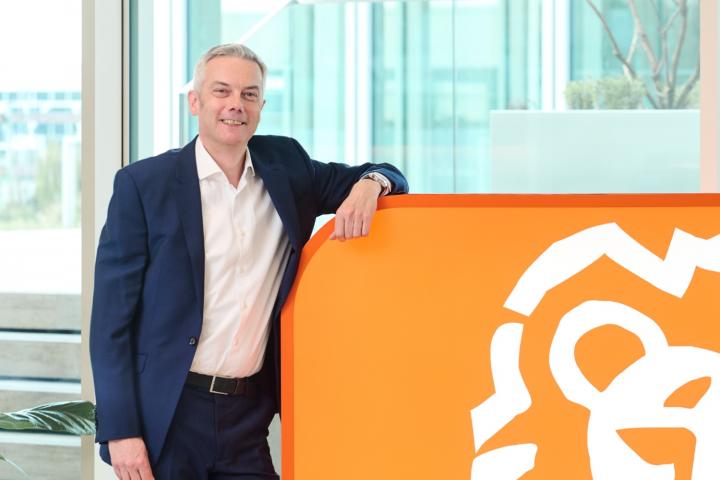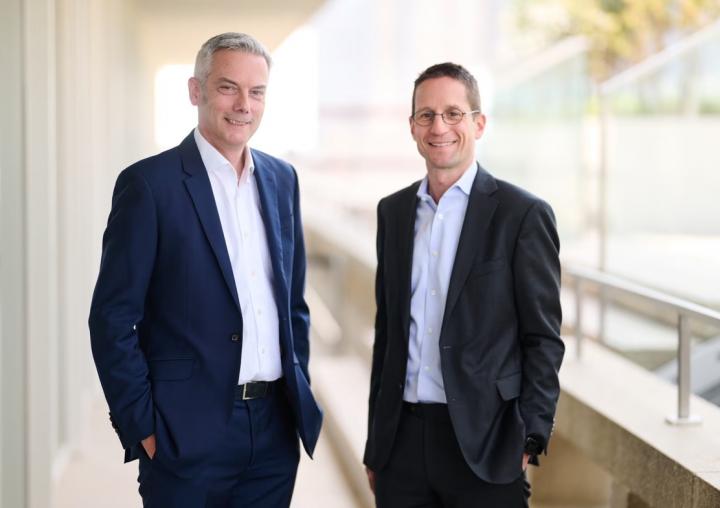
Frédéric Degembe, Chief Investment Officer of ING Belgium, is enthusiastic about the unified Investment Centre announced by parent group ING. “It’s a growth story in which Brussels can play a key role,” he said.
ING is actively reshaping its operations. In Luxembourg, retail banking and corporate lending activities are being wound down, as announced this week, to shift the focus entirely to private banking, large institutional clients, and the funds industry.
This follows last week’s launch of ING’s Global Investment Centre. which will “develop global investment propositions accessible to clients in all countries and segments,” according to the Dutch group. The existing Investment Offices in Amsterdam, Brussels, and Luxembourg are being merged for this purpose. Chris van Schuppen (formerly ABN Amro) will lead the centre from Amsterdam.
“But I’m sure he’ll be spending plenty of time in Brussels and Luxembourg,” said Degembe. “Historically, Belgium has been a pioneer in setting up investment management within ING. We will continue to play a leading role in defining investment strategy under the new structure.” He spoke at ING’s Marnix building in Brussels.
Why is ING creating a Global Investment Centre?
Degembe: “We feel it’s time to move up a division, to use sports terminology, and leave behind the country-by-country approach. It’s a logical evolution, because in practice the Brussels Investment Office has been working closely with Amsterdam and Luxembourg for about three years already. Our fund and instrument selection is aligned, and our tactical asset allocation is the same. The Global Investment Centre now formalizes that cooperation. Crucially, ISIM (ING Solutions Investment Management) is also being integrated. That’s the Luxembourg-based management company that acts as the group’s asset manager.”
Where are the efficiency gains from joining forces?
“Take fund reporting and client communications: soon we’ll be able to do this jointly across all countries. We’re also rolling out the Aladdin portfolio management software to our teams, so everyone in the Benelux will work in the same way. It’s not about eliminating duplicate work—we didn’t really have that. It’s more about deeper sharing of best practices and building more efficient processes. The cooperation between the three Investment Offices and ISIM will strengthen both our fund management capabilities and our technical investment processes.”
What is the impact on staff?
“First of all, this is not a cost-cutting or rationalization exercise. The Brussels Investment Office recently made several important hires—with Vincent Juvyns being the most prominent—and will continue to play a key role in the new structure. No jobs are being cut. The current offices in Amsterdam, Brussels, and Luxembourg are roughly the same size, each with 50 to 60 employees. ISIM employs about 40 colleagues. Altogether, that’s a unified team of around 100 people. It remains a relatively small organization for the scope of what we do.”

A fund factory
Your press release mentions 250 billion euro in assets under management, which is a huge sum.
“Yes, but with the caveat that this figure refers to all assets managed by ING in Europe—not just active management, but also custody services and self-directed assets that clients manage themselves. What we actively manage in Brussels, where investment fees are linked, is around 20 billion euro. That of course fluctuates with the markets. Amsterdam is roughly the same size, so ISIM as ManCo reaches a bit over 40 billion euro in managed assets.”
Why a global approach? Don’t investment preferences vary widely by country?
“You can see the Benelux as the group’s fund factory. Whether a personal banking or private banking client is in Poland, Spain, or Italy, their needs and level of financial market knowledge are quite similar. The Global Investment Centre will develop product ranges for each client segment, which can then be offered across markets to the right audience.”
Whether a personal banking client or a private banking client lives in Poland, Spain, or Italy, their needs and their financial knowledge are largely similar
How important is scale? The asset management industry is buzzing with merger rumors.
“Consolidation is happening across the financial sector, but don’t compare us directly with asset managers. Our situation is different. Asset managers are B2B, while we are B2C. We develop investment products with the help of asset managers, brokers, and others—and we also distribute them directly to clients. So the structure is not the same as with asset managers, who really feel the financial pressure to ‘gain size’. Some of them are indeed struggling.”
Does this scale-up also relate to growing client demand for private investments such as private equity?
“We certainly have those in our offering, but I must caution that private equity is not suitable for every investor and should never make up the largest part of a portfolio. Private assets are attractive for diversification, but investors need to be fully aware of the risks involved. They should never carry too much weight in an individual portfolio.”
Is staff not wary of cross-border merger plans within ING? Some still haven’t digested the failed projects from the era of former group CEO Ralph Hamers.
“That was a long time ago. Both at group level and in Belgium we have had a new CEO for several years now. I have been at ING for decades, and I must say I am very enthusiastic about the ‘Together for Progress’ strategy of Peter Adams, CEO of ING Belgium. It is a growth story, and we are succeeding in realizing that growth. The plans for the Investment Centre fit two hundred percent into that story. This is a kind of reorganization, but it is moving in a positive direction.”